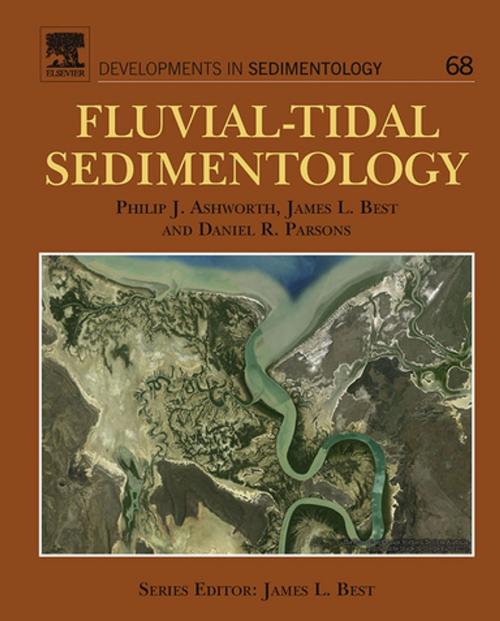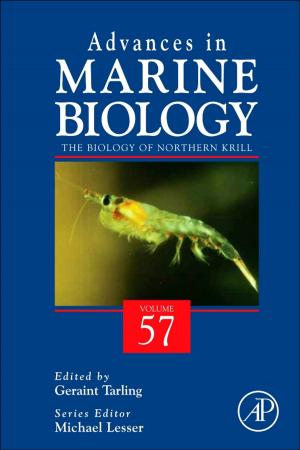Fluvial-Tidal Sedimentology
Nonfiction, Science & Nature, Science, Earth Sciences, Geophysics, Physics, Mechanics| Author: | Philip J Ashworth, James L. Best, Daniel R Parsons | ISBN: | 9780444635396 |
| Publisher: | Elsevier Science | Publication: | November 26, 2015 |
| Imprint: | Elsevier | Language: | English |
| Author: | Philip J Ashworth, James L. Best, Daniel R Parsons |
| ISBN: | 9780444635396 |
| Publisher: | Elsevier Science |
| Publication: | November 26, 2015 |
| Imprint: | Elsevier |
| Language: | English |
Fluvial-Tidal Sedimentology provides information on the ‘Tidal-Fluvial Transition', the transition zone between river and tidal environments, and includes contributions that address some of the most fundamental research questions, including how the morphology of the tidal-fluvial transition zone evolves over short (days) and long (decadal) time periods and for different tidal and fluvial regimes, the structure of the river flow as it varies in its magnitude over tidal currents and how this changes at the mixing interface between fresh and saline water and at the turbidity maximum, the role of suspended sediment in controlling bathymetric change and bar growth and the role of fine-grained sediment (muds and flocs), whether it is possible to differentiate between ‘fluvial’ and ‘tidally’ influenced bedforms as preserved in bars and within the adjacent floodplain and what are the diagnostic sedimentary facies of tidal-fluvial deposits and how are these different from ‘pure’ fluvial and tidal deposits, amongst other topics.
The book presents the latest research on the processes and deposits of the tidal-fluvial transition, documenting recent major field programs that have quantified the flow, sediment transport, and bed morphology in tidal-fluvial zones. It uses description of contemporary environments and ancient outcrop analogues to characterize the facies change through the tidal-fluvial transition.
- Presents the latest outcomes from recent, large, integrated field programs in estuaries around the world
- Gives detailed field descriptions (outcrop, borehole, core, contemporary sediments) of tidal-fluvial deposits
- Accesses new models and validation datasets for estuarine processes and deposits
- Presents descriptions of contemporary environments and ancient outcrop analogues to characterize the facies change through the tidal-fluvial transition
Fluvial-Tidal Sedimentology provides information on the ‘Tidal-Fluvial Transition', the transition zone between river and tidal environments, and includes contributions that address some of the most fundamental research questions, including how the morphology of the tidal-fluvial transition zone evolves over short (days) and long (decadal) time periods and for different tidal and fluvial regimes, the structure of the river flow as it varies in its magnitude over tidal currents and how this changes at the mixing interface between fresh and saline water and at the turbidity maximum, the role of suspended sediment in controlling bathymetric change and bar growth and the role of fine-grained sediment (muds and flocs), whether it is possible to differentiate between ‘fluvial’ and ‘tidally’ influenced bedforms as preserved in bars and within the adjacent floodplain and what are the diagnostic sedimentary facies of tidal-fluvial deposits and how are these different from ‘pure’ fluvial and tidal deposits, amongst other topics.
The book presents the latest research on the processes and deposits of the tidal-fluvial transition, documenting recent major field programs that have quantified the flow, sediment transport, and bed morphology in tidal-fluvial zones. It uses description of contemporary environments and ancient outcrop analogues to characterize the facies change through the tidal-fluvial transition.
- Presents the latest outcomes from recent, large, integrated field programs in estuaries around the world
- Gives detailed field descriptions (outcrop, borehole, core, contemporary sediments) of tidal-fluvial deposits
- Accesses new models and validation datasets for estuarine processes and deposits
- Presents descriptions of contemporary environments and ancient outcrop analogues to characterize the facies change through the tidal-fluvial transition















